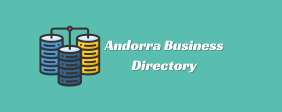Treating all subscribers alike is a mistake. It’s like casting a wide, empty net. You miss out on diverse opportunities. List segmentation is your guiding compass. It targets specific, receptive audiences. Precision marketing goes beyond generic. It delivers deeply resonant messages. This leads to higher engagement rates. It also boosts conversion rates greatly. Ultimately, it means more profit.
Not all subscribers are the same. They shouldn’t get the same messages. Your audience is very diverse. They have varying demographics and interests. Also different purchase histories. Divide your list into smaller groups. Tailor content and offers for each. Match their unique characteristics and needs. Precision increases email relevance. It feels less like marketing. It becomes valuable, personalized content. Build a stronger audience connection.
The Undeniable Benefits of Email List Segmentation
The advantages are profound and direct. They rcs data boost your marketing ROI significantly. Increased open rates are a top benefit. Subscribers open relevant emails more. Subject lines indicating tailored content help. Curiosity is piqued, engagement skyrockets. This also leads to higher click-through rates. Opened emails with relevant content get clicks. Clicks go to product pages or offers. Segmentation also improves conversion rates. Targeted offers increase purchase likelihood. This turns leads into new customers. It also reduces unsubscribe rates. Irrelevant emails lead to opt-outs. Sending pertinent info builds trust. Maintain a healthy, engaged list.
Common and Effective Segmentation Strategies
Many ways exist to segment your how to change backgrounds in photos professionally list. They range from basic to complex. Demographic segmentation groups by age. Also gender, location, or income. This allows relevant, local offers. Behavioral segmentation is powerful. It categorizes by actions taken. Past purchases are a common example. Website Browse history works too. Email engagement identifies active users. Psychographic segmentation explores interests. This includes lifestyles and values. Gather this from surveys or behavior. A sports brand segments by sport. Running, yoga, or cycling, for example. Engagement-based segmentation is crucial. It identifies active versus inactive users. Re-engage inactive contacts carefully. Protect your sender reputation. Customer lifecycle segmentation categorizes. New subscribers versus loyal customers. Each stage gets tailored communication.
Advanced Segmentation: Leveraging Data for Deeper Insights
True precision needs advanced mobile lead segmentation. This combines multiple criteria. Create highly granular segments easily. Target women aged 25-35. They bought specific products recently. They opened many of your emails. This specificity makes messages relevant. Integrate data from various sources. CRM, e-commerce, and analytics help. This gives a holistic customer view. AI and machine learning are used now. They find complex patterns automatically. Create dynamic, updating segments. This allows personalized journeys. Emails adapt to real-time behavior. No manual intervention is needed. Future email is dynamic and responsive. Every message is appreciated and acted upon. Review strategies based on data. Continually improve your precision.
